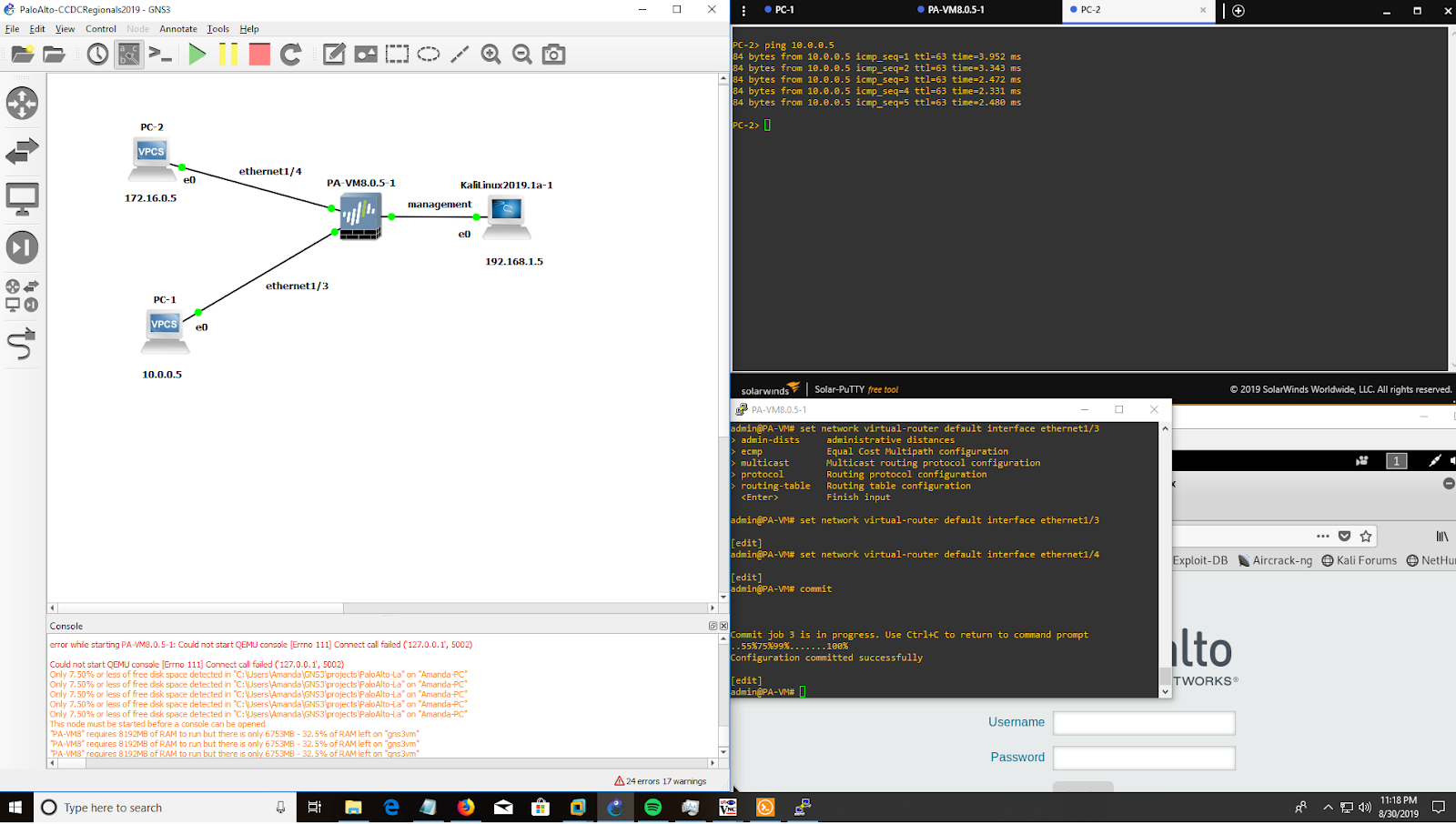
You can replace the shell with a command of your choice using the CMD directive, which causes the container to start with that command/utility running immediately on boot. There are plenty of other uses for NMAP, but this was just a simple test, to prove that it was functional: NMAP checks the target device, to see which SSH key exchange algorithms it supports. Prior to the following screenshot, the nmap container was assigned a static IP address, and connected to a router that had been preconfigured to allow SSH access to it.Ī quick test was run using the nmap -script ssh2-enum-algos target_ip command. Since it already exists in the GNS3 VM, there’s no need for the “docker pull” step that would occur, if we were going to use a container from Docker Hub. In the GNS3 topology, it is marked as PC1Bugs. This “nmap” container will be listed in the End Devices toolbar. From the output above, you can see that VPCS1s IP address is 10.1.1.1 and its default gateway is 10.1.1.251. Back at the main Preferences screen, click OK to exit it. We won’t be specifying any environmental variables this time, as the defaults are fine for this example, so click Finish to complete this configuration process. We’ll leave the console type set to telnet (we don’t need to use VNC/HTTP/HTTPS for this example), so click Next> to continue: We aren’t going to specify a start command this time, so click Next> to continue: The GNS3 Setup Wizard is displayed when GNS3 starts up for the first time. Your choices are: Run appliances on my local computer Run.
GNS3 TUTORIAL HOW TO
Next, choose how to run your GNS3 network simulations. As this example is just acting like a simple linux host, we can stick with default of 1 interface, so click Next> to continue: Step 4: GNS3 Setup Launch GNS3 Mac: You will see the prompt uBridge requires root permissions to interact with network interfaces. Specify the number of adapters you want this container to use. Give the container a name, and click Next>:

Click Edit->Preferences->Docker Containers->New, like before, but instead of specifying a “New Image”, you’ll select “Existing image”, and then pick the one you just created from the dropdown list, and click Next> to continue: (the build time will vary, based on what you’re adding to the container, plus your PC) If the build was successful, you should see a message indicating that at the end of the output.

Doesn't usually take too long to setup the lab. Just beware on what you're downloading though ) What I tend to do is read the CCNA book and then follow the labs that are in the book. You can usually find labs that people have created online.
GNS3 TUTORIAL INSTALL
Install an appliance from the GNS3 Marketplace.


 0 kommentar(er)
0 kommentar(er)
